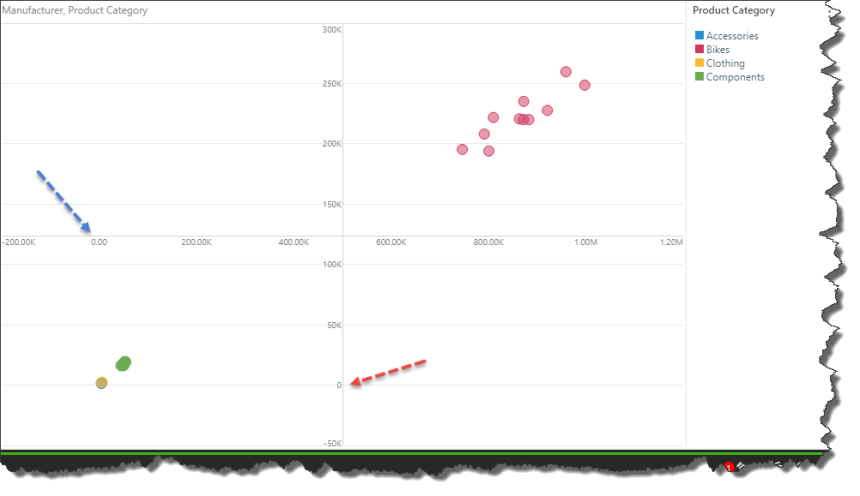The Axis Position drop-down is used to set the physical position of the x- and y-axes when working with plotted charts and radar charts. There are three axis positions: outer position, zero position, and center position.
Axis Positions
- Outer Position: both the x- and y-axes are positioned along the outside of the chart, with minimum scale values starting at the values automatically determined by Pyramid (unless a custom scale limit is configured from the Axes Options dialog).
- Zero Position: if the minimum scale limits fall below 0, selecting this option will position the x-axis in such a way that it intersects with the 0 point on the y-axis.
- Center Position: this option positions the x-axis horizontally across the middle of the canvas, and the y-axis vertically down the middle of the canvas, so that both axes intersect in the center of the chart.
Formatting Panel
Axis position can be changed from the Formatting Panel:
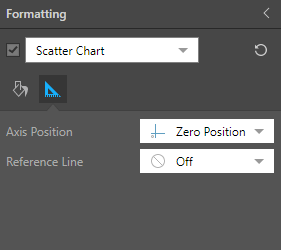
Axis Position Drop-Down
The Axis Position drop-down can also be accessed from the Component ribbon:

Examples
In this example, the following data set is plotted in a scatter chart:
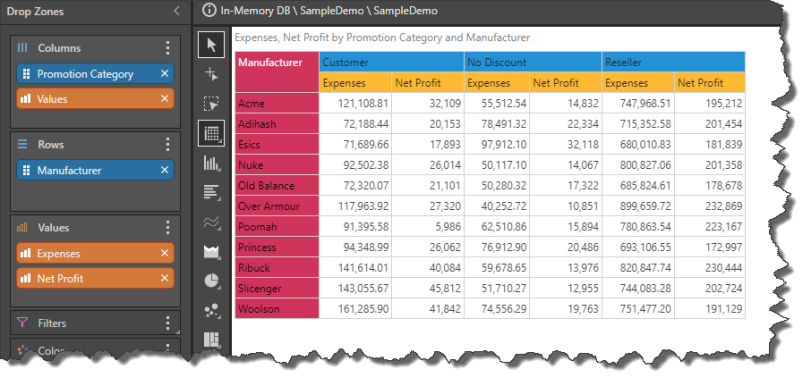
Here, outer position was selected, so that the x-axis intersects with the smallest scale limit on the y-axis, which is -50K (red arrow).
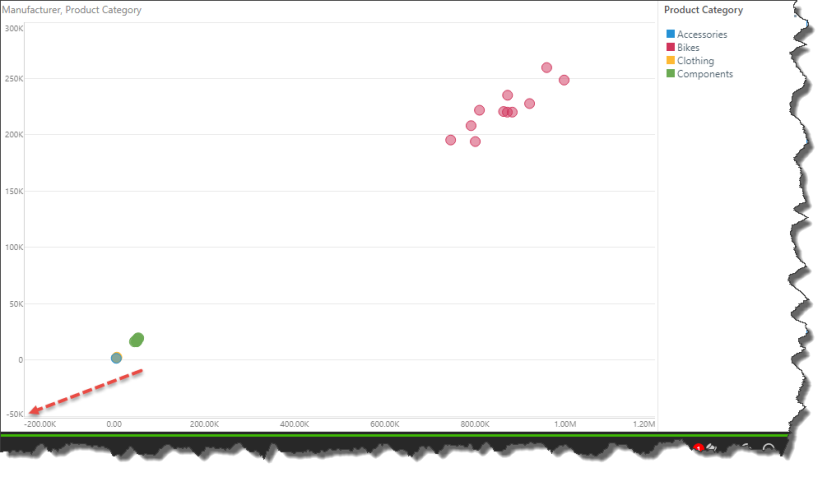
Here the zero position was chosen; both the x- and y-axes are positioned so that they intersect at 0 (red arrow).
If neither axis displays a minimum scale value of less than 0, the zero position will be the same as the outer position.
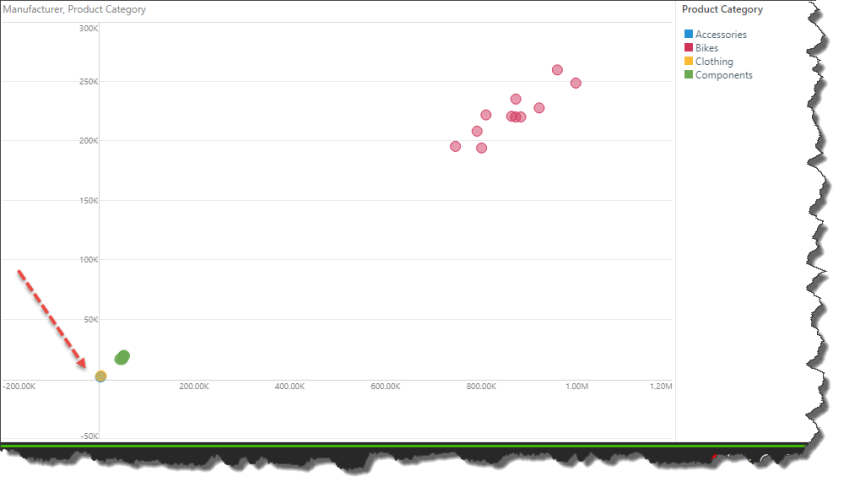
Here, center position was selected; both axes intersect in the center of the chart, splitting it into four quarters. As usual, the x-axis (blue arrow) is horizontal, and the y-axis (red arrow) is vertical).
